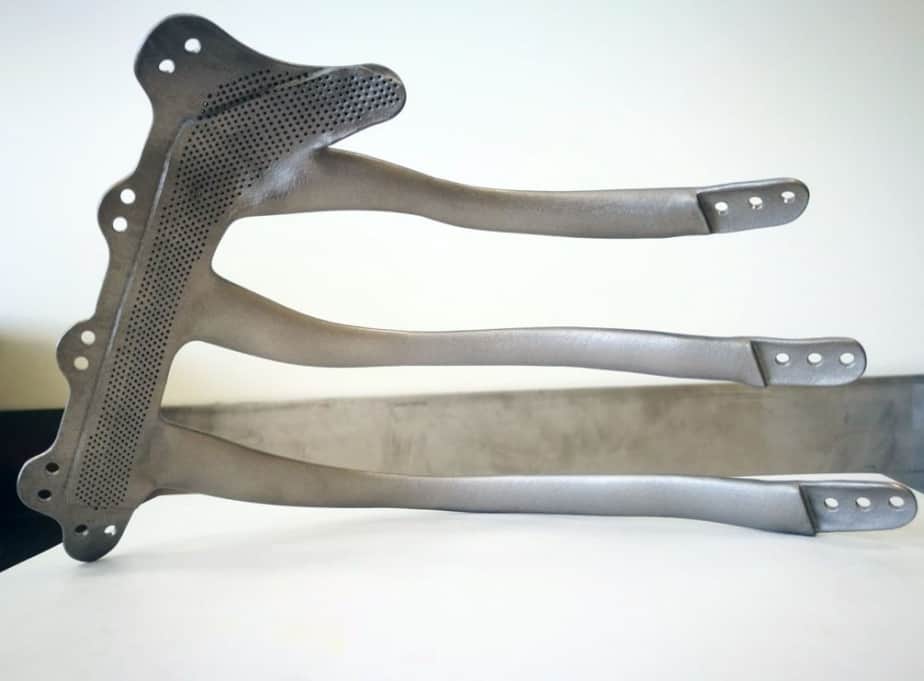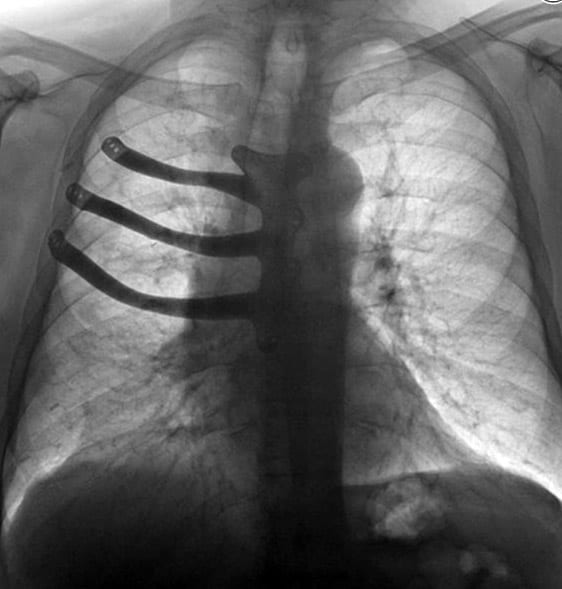Cardiothoracic surgeons Ira Goldsmith and Thomas Bragg at Morriston Hospital in Swansea turned to Renishaw’s medical prosthesis team to help repair a large gap in the chest of 71-year-old Peter Maggs, left after the removal of a tumour that had developed in the cartilage of one of his ribs.
Maggs had experienced no pain or discomfort and thought that the lump in his chest was a cyst, but scans have revealed a tumour the width of a tennis ball. “It was a very extensive growth that need to be removed,” explained Goldsmith. “However removing it also meant removing part of the breastbone and three ribs.”

Normal surgical procedure would be to repair the resulting gap with a cement prosthesis that would be made during the surgery. However, because Maggs suffers from heart problems and this would have lengthened the surgery, the team thought that a premade custom implant would provide a faster and better solution. “Although [a cement prosthesis] can be quite substantial it is not a precise fit, and it can move, causing problems such as dislocation,” Goldsmith said.

Morriston’s biomedical 3D technician Heather Goodrum and maxillofacial laboratory services manager Peter Llewelyn Evans used Maggs’ CT scans to create the bespoke implant, which was made from titanium powder at Renishaw’s healthcare centre near Cardiff. This generally produces custom implants for dental and skull surgery, and has not produced this type of implant before. "We are delighted to have been the subcontractor for this complex 3D printed titanium implant. We wish Mr Maggs well with his recovery," commented Renishaw spokesman Chris Pockett.
The titanium implant was designed to be screwed into place, but as the bone it needs to be attached to was narrow and soft, Goldsmith sewed it into place instead, and covered it with a section of muscle earlier harvested from Maggs’ upper back.
The procedure took eight hours, two hours less than if a cement prosthesis had been used. “We are very pleased with the outcome. The implant is a perfect fit,” Goldsmith said. “Titanium is very strong and any problems like this location are reduced or even eliminated because the implant is anchored securely to the ribs and breastbone.”
Goldsmith has discussed the procedure with Swansea University, and says that protocols are being drawn up so that other surgeons around the world can use this technique. He is also planning to carry it out again in future at Morriston.




Swiss geoengineering start-up targets methane removal
No mention whatsoever about the effect of increased methane levels/iron chloride in the ocean on the pH and chemical properties of the ocean - are we...